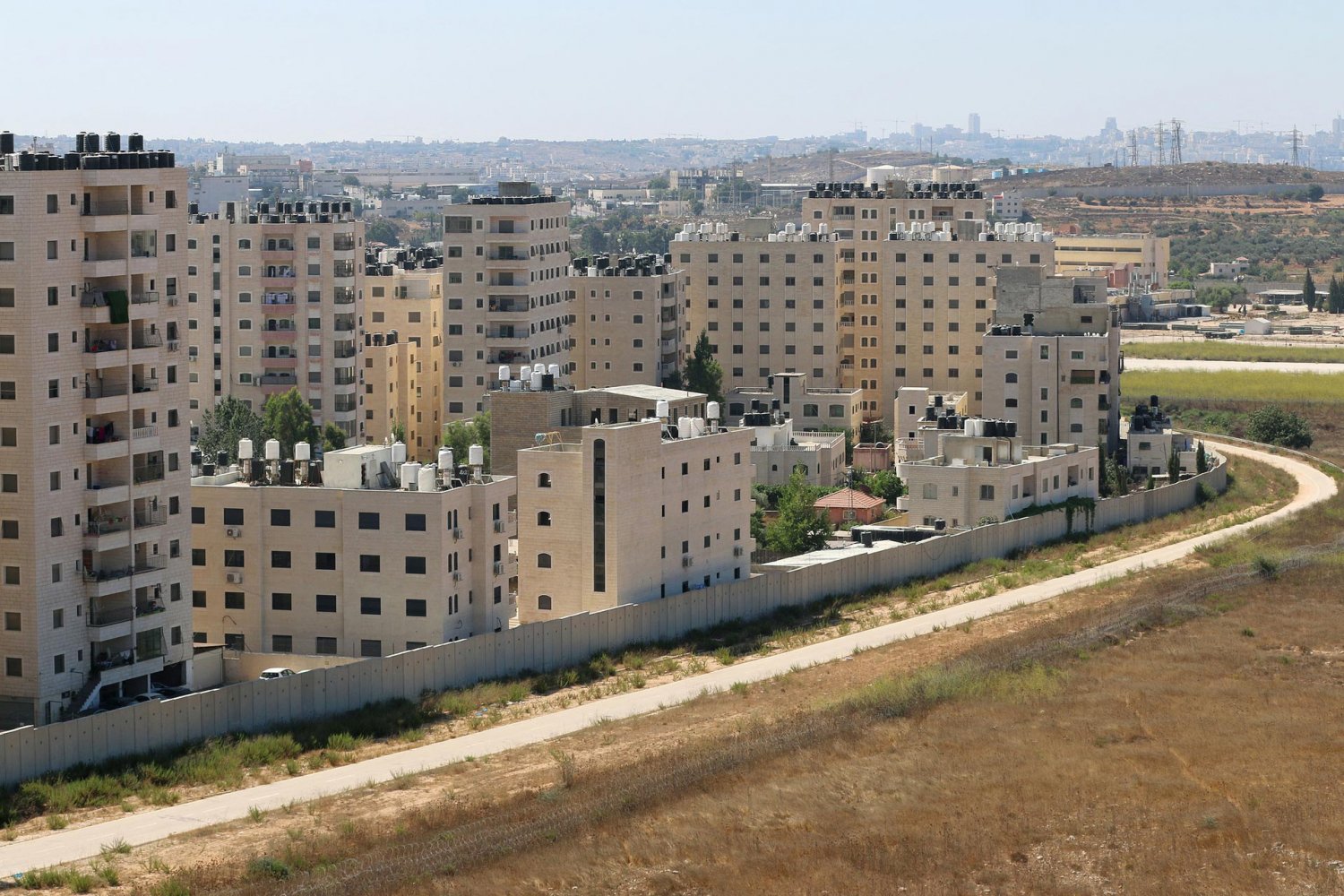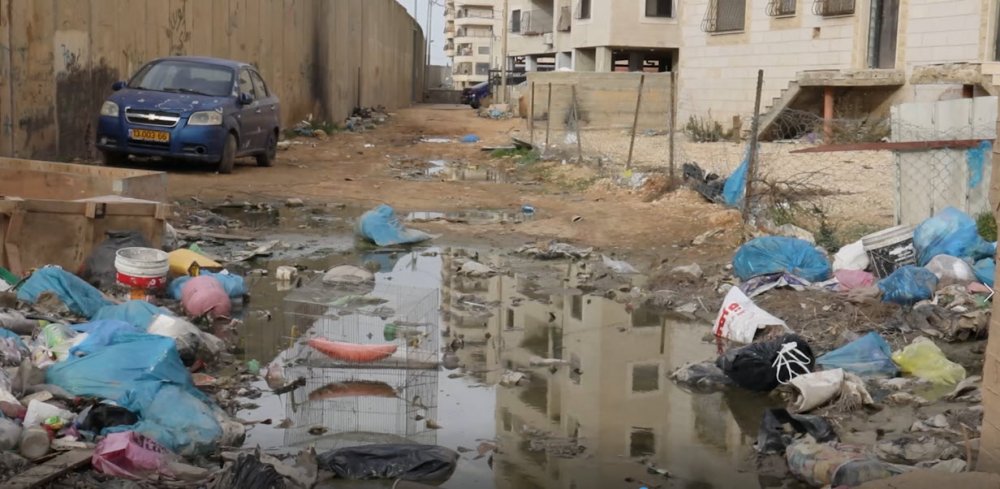Kufr ‘Aqab is located 5 km south of Ramallah and 17 km north of Jerusalem, constituting the city’s northernmost neighborhood. While most of Kufr ‘Aqab lies within the Israeli municipal boundaries, placing it under the city’s legal jurisdiction, the wall runs along its southern and western sides, shutting it away from the rest of the city and from neighboring Qalandiya and al-Ram.
Before the 1967 War, Kufr ‘Aqab was a small, modest Palestinian village of less than 300 people, located on a hilltop in the southern hinterlands of Ramallah, surrounded by vast agricultural lands. In 1967, with Israel’s occupation of East Jerusalem, 54 percent of Kufr ‘Aqab land was forcibly enfolded into the Jerusalem municipality, which the state unilaterally expanded immediately after the war (see Where Is Jerusalem?). In 1985, an additional 34 percent of Kufr ‘Aqab land was annexed by the expansive Kokhav Ya’akov settlement.
Following the completion of the wall along its northern border with al-Matar in 2002, Kufr ‘Aqab was completely walled off from the city.
Today, socioeconomic transformation triggered by the wall’s construction, Israeli legal confabulations, and other socioeconomic pressures have turned Kufr ‘Aqab into one of the most densely populated urban Palestinian neighborhoods in Jerusalem. After the erection of the wall in 2002, thousands of Palestinians from the West Bank, Jerusalem, and from inside the Green Line started moving to Kufr ‘Aqab en masse. In just 18 years, the population rapidly grew from 25,000 to a staggering 90,000. The myriad reasons behind this shift are more complex than can be fully covered in this brief case study; we just touch on a few.
Meanwhile, the Jerusalem municipality more or less washed its hands of Kufr ‘Aqab starting in 2011, declaring that it would no longer provide basic municipal services there and ceasing routine oversight.
In light of this, a handful of private contractors took advantage of Kufr ‘Aqab’s ambiguous legal status, which spared them all forms of building regulations. A construction boom of high-rise apartment buildings ensued throughout the parts of the neighborhood within municipal lines. This was done without proper urban planning, and it left little space for public infrastructure. It did, however, create a glut of cheap housing, and drew residents seeking a reprieve from the costly housing in the city like moths to a flame. According to one analyst,


